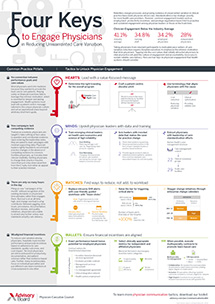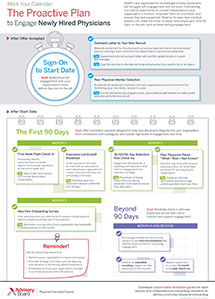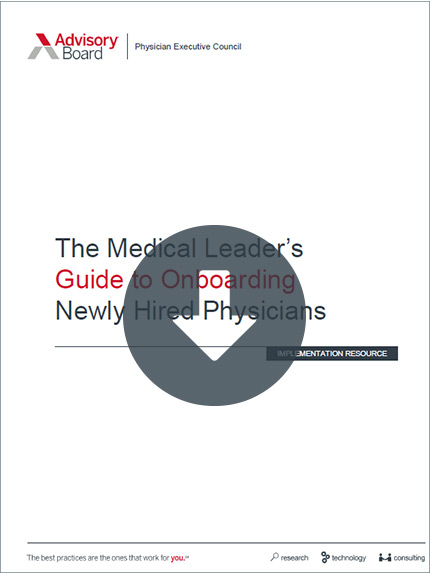Auto logout in seconds.
Continue LogoutRead Advisory Board's take: 6 drivers of engagement that you can move the dial on
Faced with slim operating margins, hospitals today are looking beyond financial incentives to engage physicians. In this financial climate, here's what three major health systems are doing to guard against burnout, Christopher Cheney reports for HealthLeaders Media.
When physicians are engaged, hospitals prosper
About 50% of physicians experience symptoms of "burnout" and disengagement, including stress and issues with work-life balance, according to a 2017 study published by the National Academy of Medicine.
Traditionally, hospitals could target disengagement among physicians by offering pay raises. However, hospitals today lack such cash, according to Cheney.
"Without income in hand, hospital leaders must rely on some thrifty and tested 'satisfiers' that work in any good business," Cheney writes.
Cheney reports on what three leading health systems are doing to engage physicians "through a supportive and productive environment."
Cleveland Clinic's high-reliability initiative
To establish a supportive environment for physicians, Cleveland Clinic launched a high-reliability initiative that centered on five ideas:
- Creating a culture of safety;
- Policy standardization;
- Real-time operational management;
- Sustaining redundancy in the clinical setting; and
- Team building.
Edmund Sabanegh, president of Cleveland Clinic's main campus hospital, said, "One of the challenges for any large health care system is there are many sites for delivery of care." He added, "A pitfall that you can have is failing to recognize the nooks and crannies of the system, then having different policies and standard operating procedures for different areas."
With this challenge in mind, Cleveland Clinic has "standardize[d] [its] policies to make sure that a nurse who works in one ward, then works in another location in our system has a similar expectation and similar understanding of processes," Sabanegh said.
Along with policy standardization, Cleveland Clinic has also developed a team-based approach to care. For example, Sabanegh explained the Clinic has implemented "operating room pauses," which are designed to encourage every member of the surgical team—not just the surgeon—to speak up. "Any member of the team [during surgery] can say, 'I want to look at where we are before we proceed any further with this procedure.' It could be the most junior member of the surgical team or it could be the most senior member," Sabanegh said.
The Clinic also uses real-time operational management by holding tiered huddles "every morning, on every nursing unit" where the nurses "discuss what has gone right, opportunities, and concerns for the day ahead," Sabanegh said.
The main takeaways of the tiered huddles are reported to senior hospital leadership, including the president, CMO, chief quality officer, and chief nursing officer. Then, the takeaways from the hospital's leadership huddles are reported to the health system leadership. The reporting system allows leaders to take action based on "timely information," every day, Cheney reports.
"We don't want to be in a reactive mode ... we want to identify ... something that could turn into a serious safety event down the road," Sabanegh said.
Sabanegh said that the high-reliability system helps reduce physician burnout by creating a supportive environment and distributing responsibilities across teams. But, to maintain engagement in the high-reliability system, Sabanegh explained it is important to convey to physicians how it improves outcomes and operations, which Cleveland Clinic does through educational programs.
For instance, the high-reliability system helped the hospital reduce its 30-day readmission rate from 14% to just over 12% and increase outpatient hypertension control from 66% to 76%.
"We have seen a steady improvement in our quality outcomes, a reduction in serious safety events, and improvements in our readmissions—all things that are important to our patients and improve when our care team makes sure we are highly reliable," Sabanegh said.
NorthShore's predictive modeling
NorthShore University HealthSystem uses 20 prediction models to help physicians choose interventions for high-risk patients, according to Nirav Shah, an infectious disease specialist at NorthShore.
Shah explained that prediction models, operated through the system's Clinical Analytics Prediction Engine (CAPE), help "refin[e] the patient population" so that physicians can give special attention or administer interventions to "a small subset of the patients" instead of an entire population.
This way, instead of overwhelming physicians with data that might be invaluable, "You can show physicians that prediction models are providing them with key insight for outcomes that are important to them and that the data they are entering has a return on investment," Shah said.
For example, the cardiac arrest prediction model assesses a patient's risk level for cardiac arrest to determine whether the patient needs an intensive care consultation. Shah said the technology so far has successfully reduced the number of patients who go into cardiac arrest and might decrease mortality in the future.
Now, NorthShore wants to put all of the different prediction models "into a single engine," which Shah said he expects will increase the utility of the model for physicians and improve engagement.
"Each prediction model has its own lexicon of risk," Shah explained. "What we are doing is trying to combine every prediction model into a large engine, so we can subdivide patients" and treat patients with comorbid conditions.
But, like Sabanegh, Shah said the key to advancing a new system or program, such as expanding CAPE, is to gain physician approval. He said NorthShore has "a track record of implementing predictive models," but at first, they had to physicians the models were improving patient care.
"In the end, all providers want to improve patient care," Shah said.
Kettering gets physicians involved in supply chain
At Kettering Health Network, physicians are able to use their clinical knowledge to improve clinically integrated supply chains—giving them control over the supplies they use with patients, Trisha Gillum, director of supply chain management at Kettering, said.
Gillum explained that physician involvement in the supply chain can be "as small as a physician champion on a single project, to being a physician champion for a service line, to being on the payroll for supply chain." But, the most effective physicians are the ones who are "willing to understand both the financial and the clinical nuances to a project" and "be … a champion for a project," Gillum said.
For example, she said one physician "went out and talked with every one of his peers who performed a particular procedure" and convinced them "that we needed to make a change." The physician "was able to accomplish more in those conversations than I could have accomplished in months of conversations with the same group of physicians," Gillum said.
Involvement in the supply chain benefits physicians by giving them valuable experience in hospital administration, plus it helps them decide supply changes that could affect their patients, Gillum said.
But, in order to ensure full engagement from physicians, Gillum said hospital leaders and supply chain managers need to treat physicians like equals, which requires being open to their potentially divisive opinions on supply chain changes. "They are going to want to engage in the process. They are going to want to modify it. So, you may end up in an entirely different place than you expected," she said. "If you disregard what they are saying, you are going to lose partners" (Cheney, HealthLeaders Media, 10/23).
Advisory Board's take
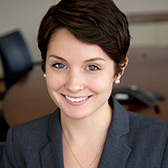
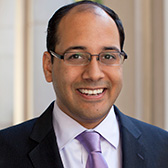
Sarah Evans, Practice Manager, Physician Executive Council and Hamza Hasan, Practice Manager, Medical Group Strategy Council
This article highlights a key challenge that many clinical executives face: The increasing administrative burden of medicine is sparking growing disenchantment—and burnout—among frontline physicians. While investing in predictive analytics and high-reliability care is clearly important to engaging physicians in their work, it's vital for leaders not to overlook the fundamental issues impacting the day-to-day lives of physicians.
To help leaders scope their physician engagement efforts, we recently conducted a national-level analysis of employed and independent physicians to identify the top-opportunity drivers of engagement. We looked for drivers that had a statistically significant impact on engagement, did not require outsized investment, and on which organizations nationally had significant room to improve.
We identified six drivers, or statements that, if physicians agreed with, meant they were far more likely to be engaged. The statements included:
- The actions of this organization's executive team reflect the goals and priorities of participating clinicians;
- This organization is well prepared to meet the challenges of the next decade;
- I view this organization as a strategic partner in navigating the changing healthcare landscape;
- This organization is open and responsive to my input;
- This organization recognizes clinicians for excellent work; and
- I am interested in physician leadership opportunities at this organization.
The good news: Adopting initiatives to help your physicians agree with these statements doesn't require outsized investment. Rather, leaders can move the dial on engagement by improving day-to-day communications and meeting structure—and by involving physicians early on in new change initiatives. And our analysis suggests that higher engagement levels act as a buffer against physician burnout.
“We would recommend a clear focus on EMR training and support for all physicians.”
In addition, to address the growing administrative burden affecting physicians, we would recommend a clear focus on EMR training and support for all physicians. According to one study, the average physicians only spends a third of their day working with patients, with the rest being consumed by administrative work in the EMR. Since the EMR is clearly not going away, helping physicians become more comfortable with the digitization of medicine should be a key priority. Everything from training programs, one-on-one coaching, protocols for automation, and assistance with documentation should be on the table.
To learn more about the six tactics we recommend to alleviate the EMR's growing burden on physicians, be sure to download The Medical Group Leader’s EMR Optimization Playbook.
Don't miss out on the latest Advisory Board insights
Create your free account to access 1 resource, including the latest research and webinars.
Want access without creating an account?
You have 1 free members-only resource remaining this month.
1 free members-only resources remaining
1 free members-only resources remaining
You've reached your limit of free insights
Become a member to access all of Advisory Board's resources, events, and experts
Never miss out on the latest innovative health care content tailored to you.
Benefits include:
You've reached your limit of free insights
Become a member to access all of Advisory Board's resources, events, and experts
Never miss out on the latest innovative health care content tailored to you.
Benefits include:
This content is available through your Curated Research partnership with Advisory Board. Click on ‘view this resource’ to read the full piece
Email ask@advisory.com to learn more
Click on ‘Become a Member’ to learn about the benefits of a Full-Access partnership with Advisory Board
Never miss out on the latest innovative health care content tailored to you.
Benefits Include:
This is for members only. Learn more.
Click on ‘Become a Member’ to learn about the benefits of a Full-Access partnership with Advisory Board
Never miss out on the latest innovative health care content tailored to you.
